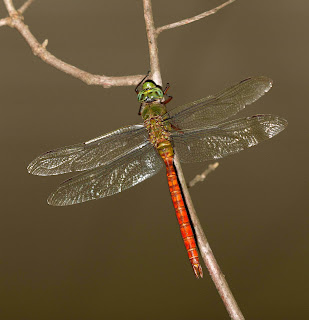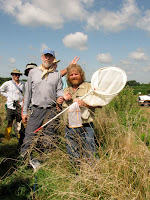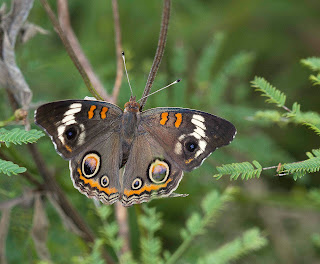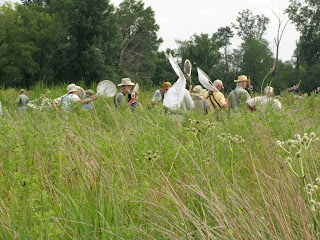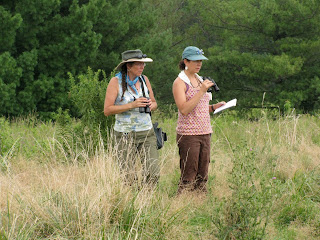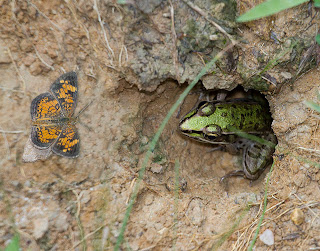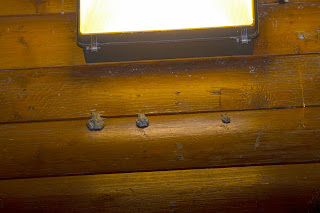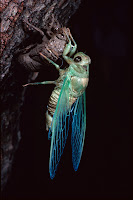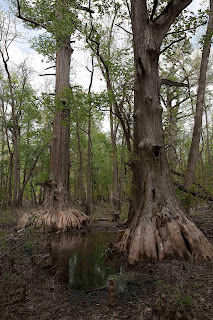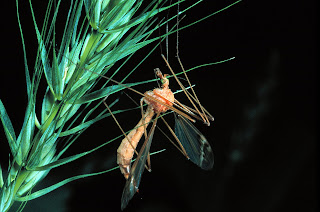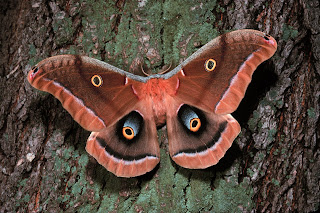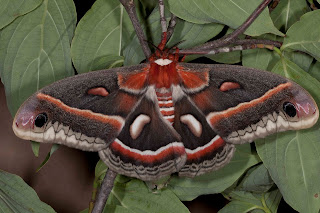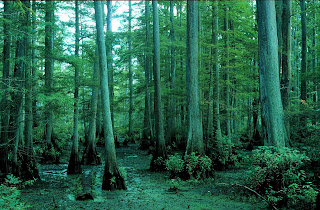 by Susan Post
by Susan Post Long before human records were kept, the extreme tip of southern Illinois bordered the shoreline of a much larger Gulf of Mexico. Though the seas retreated, plants and animals remain in southern Illinois that are more commonly found surrounding the present day Gulf of Mexico. Heron Pond, located in Johnson County, provides a glimpse into this ancient landscape.
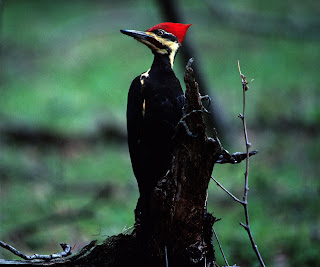
In this strange, silent, primeval world of the southern swamps, the only sounds one hears are created by humans or birds: the groan and creak of the floating boardwalk underfoot, a pileated woodpecker hammering on a long-dead snag, a prothonotary warbler chortling as it feeds its young, or the startled cry of a wood duck fleeing through the trees. Cypress trees, in a seemingly vast stand, support upon their "knees" little colonies of plants —islands in miniature. The surface of the pond is covered with several species of duckweed.  This thick green blanket is broken only by a fallen cypress needle, the black ribbon of a swimming cottonmouth, or the delicately embossed outline of a floating frog. In the quiet and stillness, the bayous of Louisiana come to mind.
This thick green blanket is broken only by a fallen cypress needle, the black ribbon of a swimming cottonmouth, or the delicately embossed outline of a floating frog. In the quiet and stillness, the bayous of Louisiana come to mind.
This area was originally described by an English journalist in the 1860s as "a forest of dead trees—a cheerless miserable place, sacred to the ague and fever." Other early visitors described it as a place where your first and only thought was "how shall I get away again" or more simply, "the pit of hell." These descriptions of the swamps of southern Illinois, of vegetation more typical of Mississippi, Alabama, or Louisiana, were made by individuals viewing the landscape without the luxury of a boardwalk.

Heron Pond, located 1 mile northwest of Forman, Illinois, is a bald cypress forest named for the great blue herons that nested in the huge cypress trees. It is part of a larger area called the Cache River State Natural Area. The trail at Heron Pond begins west of the parking lot. Crossing the Upper Cache River on a suspension bridge, you enter the bottomland forests, soon leave them behind, and enter the world of the swamp.

In spring, the trail is lined with wildflowers; by August the huge white blossoms of spider lily have opened, creating patches of white in the unrelenting green. By late fall the cypress trees have discarded their needles, littering the duckweed with brown. Fortunately, your adventure into the swamp is greatly aided by a long boardwalk.
Though the southern swamp, with its midsummer heat, humidity and mosquitoes, could still be called "the pit of hell" by the unprepared, the sights and sounds of this unique landscape soften this unfortunate description for most, and a visit to Heron Pond becomes an adventure into the remote past.


